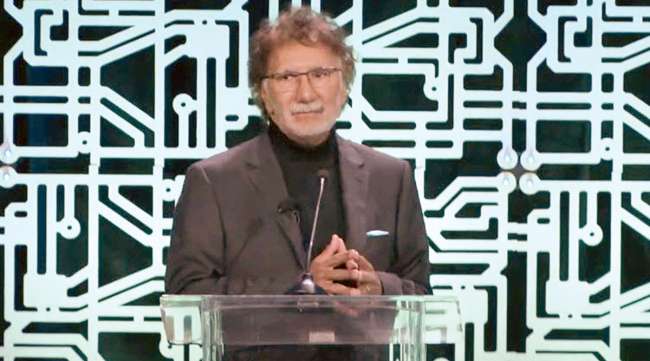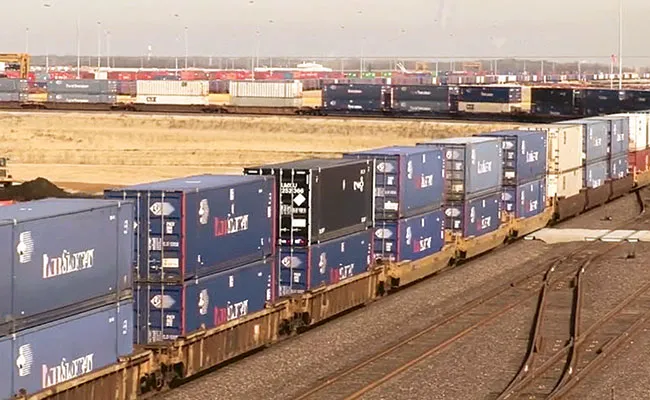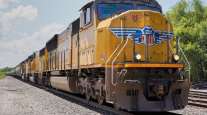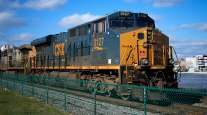Senior Reporter
Port of Long Beach CEO Cordero Details Upcoming Projects

[Stay on top of transportation news: Get TTNews in your inbox.]
Port of Long Beach officials were upbeat about prospects for the facility even as its 2023 performance was down 12.2% year-over-year.
CEO Mario Cordero said the port is regaining market share now that the long labor negotiations between the Pacific Maritime Association and the International Longshore and Warehouse Union reached a successful conclusion in 2023.
The Southern California port processed 8,018,668 20-foot equivalent units last year — touting September and October as the busiest months — compared with 9,133,657 containers in 2022.
“The San Pedro Bay Ports Complex is the nation’s No. 1 trade gateway and has been consistent in cargo flow throughout the year. Whether one port is up and the other is down for a month is not the point,” Cordero told an audience gathered for the annual State of the Port address Jan. 17 at the Long Beach Convention Center.
Cordero spelled out his goals for the port when it came to transforming it to a clean energy leader, and he said 2024 will be the year of rail at the facility.

The Port of Long Beach is tackling several rail projects this year. Cordero said that during 2023, workers built a 3-mile train that traveled from Southern California to Chicago. (Port of Long Beach)
“We have gone through one of the greatest challenges with the COVID-19 pandemic — and we’ve emerged, still the premier gateway for trans-Pacific trade,” Cordero said. “At the end of this decade, the Port of Long Beach will be on the cusp of not only operational transformation given our rail investment but also environmental transformation to a zero-emission port.”
To get there, Cordero and his team say they want to move a greater volume of cargo by short-line and Class I railroads. The goal is to expand rail’s share to 50% by the end of the decade by significantly expanding on-dock rail and eventually going to 24/7 rail operations.
The centerpiece of the port’s vision is the expansion of the Pier B On-Dock Rail Support Facility, which will more than double the existing Pier B rail yard to 171 acres from 82 acres and more than triple the volume of on-dock rail cargo the port can handle annually to 4.7 million TEUs from 1.5 million TEUs. The number of tracks will be quadrupled to 48 from 12.
This year we will see the start of construction on our state-of-the-art Pier B On-Dock Rail Support Facility. This long-anticipated project will amplify the velocity of cargo at our port – and we are set to break ground by summer. #POLBSOTP2024 pic.twitter.com/KwnhspNBe1 — Port of Long Beach (@portoflongbeach) January 17, 2024
The yard will also feature a depot for fueling and servicing up to 30 locomotives at the same time and a full-service staging area to assemble and break down trains up to 10,000 feet long. The facility has been in the planning stages for more than 10 years, and officials plan to break ground on the $1.56 billion project this summer; it will be built in stages with completion set for 2032. More than 1,100 construction-related jobs will be created as a result of the project. The Port of Long Beach has already secured $643 million in federal, state and local grant funding to help complete the Pier B On-Dock Rail Support Facility — more than $500 million of which was awarded in 2023.
“While we continue to innovate and revolutionize goods movement, we are developing the skilled workforce needed to move cargo in the future,” Long Beach Mayor Rex Richardson said.
Already, Long Beach is relying more on rail to move cargo in and out of the complex. Cordero said that during 2023, workers built a 3-mile train that traveled from Southern California to Chicago. He said 4-mile long trains are coming in the near future.
The port also is planning a direct rail line between Long Beach and Phoenix, helping to further decongest clogged transportation corridors traveled by trucks.
Both the Port of Long Beach and adjacent Port of Los Angeles are served by the Pacific Harbor Line, a neutral switching railroad that serves shippers.
RELATED: Port of Los Angeles Leader Outlines Ambitious Goals for 2024
Pacific Harbor Line handles 40,000 carloads of freight a year, excluding intermodal traffic. The Alameda Corridor provides rail service to the port complex through the BNSF and Union Pacific Railroad. The corridor is a 20-mile freight rail expressway owned by the Alameda Corridor Transportation Authority that connects the ports of Los Angeles and Long Beach.
Cordero anticipates more federal and state money will continue to pour into the port during 2024 for several projects, including the port’s effort to develop a “hydrogen hub” that would fuel cargo-handling equipment with zero-emission technology.
ZEERO also includes our Pier Wind initiative. We are proposing to build offshore wind turbines in the Port and tow them to federal waters off the coast of Central and Northern California, ultimately enabling the state to generate 25 gigawatts of electricity by 2045. #POLBSOTP2024 pic.twitter.com/l5mlnAlZXK — Port of Long Beach (@portoflongbeach) January 17, 2024
The leadership said the port also will make progress in 2024 on the ambitious “Pier Wind” project. It’s a proposed 400-acre terminal designed to facilitate the assembly of offshore wind turbines that will eventually be built in the Pacific.
Want more news? Listen to today's daily briefing below or go here for more info:




